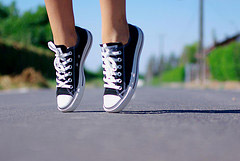When I say “physical fitness” what’s the first thing that pops into your head?
The first thing I think of is the Presidential Physical Fitness tests we used to take in school. Maybe it’s because I have a lot of trauma and negative emotions tied to them. As the fat kid, these tests caused me much anxiety. I couldn’t run a mile, do a chin up or complete the required number of sit ups.
In health and fitness circles we spend a lot of time talking about physical fitness. I have since gotten over my fear of the term, but the more clients I work with the more I think our focus may be displaced. Yes, running a mile under a certain time is a great goal. But is it really what most people need to worry about?
Physical function, to me, is a much better area of focus. Physical function is defined as:
One’s ability to carry out various activities, ranging from self-care (activities of daily living) to more challenging and vigorous activities that require increasing degrees of mobility, strength or endurance (Stewart & Kamberg, 1992; Haley, Coster & Binda-Sundberg, 1994; Haley, McHorney & Ware, 1994; Wilson & Cleary, 1995).
This term used to be mainly applied to older adults or those with physical challenges. However, society is getting unhealthier and more sedentary as the obesity epidemic grows. The consequence? Lack of physical function in one or more areas is becoming more common in younger adults.
Some examples of our modern maladies:
- Inability to lift legs up to tie shoes or put on socks.
- Unable to get up off floor from a seated position.
- Can’t walk up more than 1 or 2 flights of stairs without stopping.
- Low back pain from tight hamstrings and weak core.
- Getting up out of a chair requires an arm or pushing off.
Some of you might laugh at the thought of some of these things, but really they aren’t a laughing matter. I see these things in people in their 30s. If they have these problems now, what are they going to look like in their 60s and 70s?
Fat loss and athletic achievements (like running a 5K) are great goals to strive for. But so is moving freely and without pain. But we, as a fitness industry, need to do a better job of helping people function. It’s not a matter of “no pain, no gain” but a matter of “no pain”. Exercise should be fun and challenging but compatible with real life challenges facing people. Being able to touch your toes and walk a mile are just as important as fat loss and running.
How do you feel about the fitness industry? Is the emphasis on boot camps and “insane” workouts helping or hurting?



